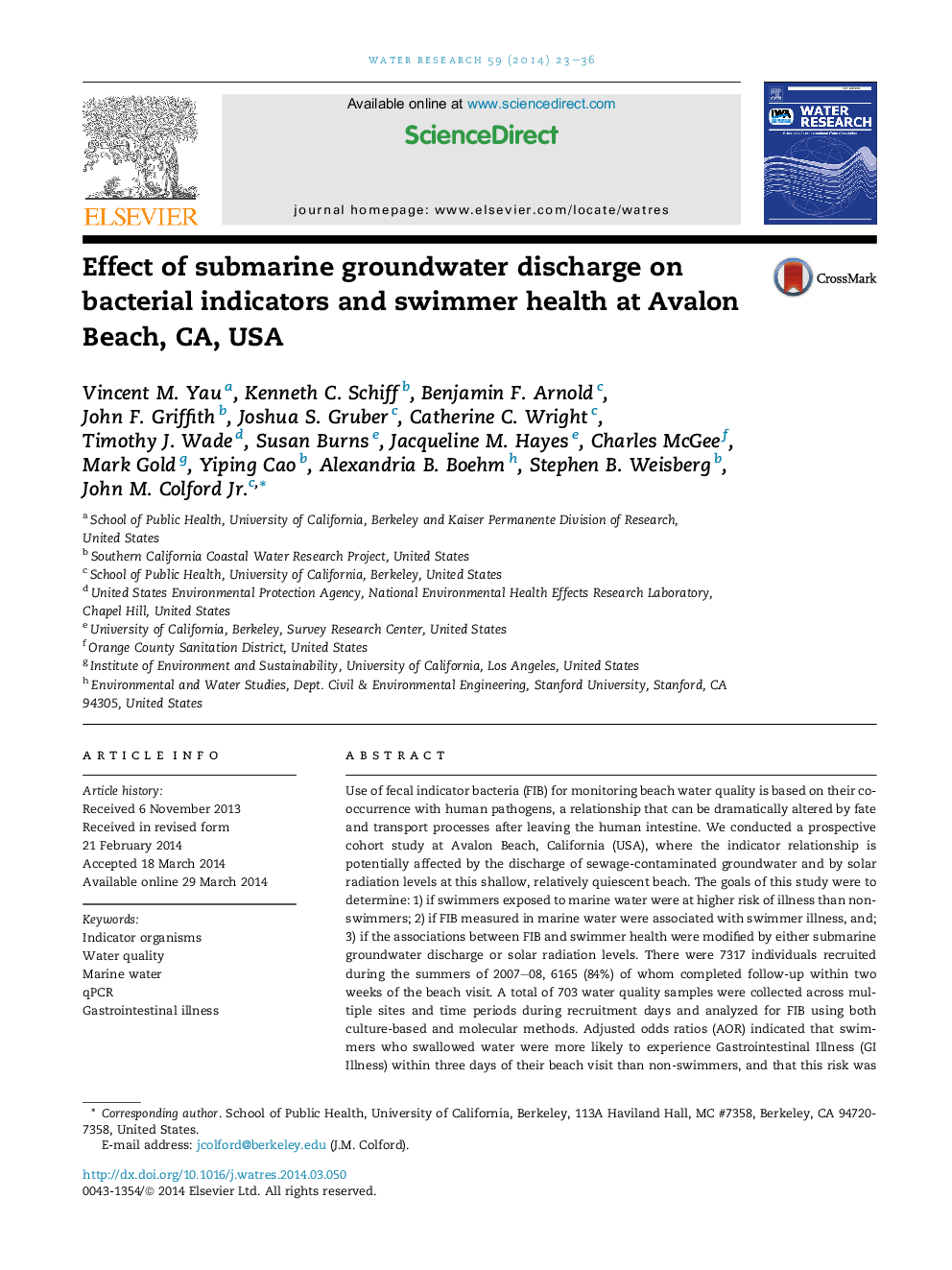| کد مقاله | کد نشریه | سال انتشار | مقاله انگلیسی | نسخه تمام متن |
|---|---|---|---|---|
| 4481523 | 1623109 | 2014 | 14 صفحه PDF | دانلود رایگان |

• We studied predictors of swimmer health at a beach with poor water quality.
• High or low groundwater discharge rates may have modified illness rates in swimmers.
• Swimmers who swallowed water had more GI Illness when groundwater levels were high.
• Indicator bacteria levels predicted swimmer illness if groundwater levels were high.
• Use of physical data and indicator organisms together may improve illness prediction.
Use of fecal indicator bacteria (FIB) for monitoring beach water quality is based on their co-occurrence with human pathogens, a relationship that can be dramatically altered by fate and transport processes after leaving the human intestine. We conducted a prospective cohort study at Avalon Beach, California (USA), where the indicator relationship is potentially affected by the discharge of sewage-contaminated groundwater and by solar radiation levels at this shallow, relatively quiescent beach. The goals of this study were to determine: 1) if swimmers exposed to marine water were at higher risk of illness than non-swimmers; 2) if FIB measured in marine water were associated with swimmer illness, and; 3) if the associations between FIB and swimmer health were modified by either submarine groundwater discharge or solar radiation levels. There were 7317 individuals recruited during the summers of 2007–08, 6165 (84%) of whom completed follow-up within two weeks of the beach visit. A total of 703 water quality samples were collected across multiple sites and time periods during recruitment days and analyzed for FIB using both culture-based and molecular methods. Adjusted odds ratios (AOR) indicated that swimmers who swallowed water were more likely to experience Gastrointestinal Illness (GI Illness) within three days of their beach visit than non-swimmers, and that this risk was significantly elevated when either submarine groundwater discharge was high (AOR [95% CI]:2.18 [1.22–3.89]) or solar radiation was low (2.45 [1.25–4.79]). The risk of GI Illness was not significantly elevated for swimmers who swallowed water when groundwater discharge was low or solar radiation was high. Associations between GI Illness incidence and FIB levels (Enterococcus EPA Method 1600) among swimmers who swallowed water were not significant when we did not account for groundwater discharge, but were strongly associated when groundwater discharge was high (1.85 [1.06, 3.23]) compared to when it was low (0.77 [0.42, 1.42]; test of interaction: P = 0.03). These results demonstrate the need to account for local environmental conditions when monitoring for, and making decisions about, public health at recreational beaches.The views expressed in this article are those of the authors and do not necessarily reflect the views or policies of the U.S. Environmental Protection Agency.
Figure optionsDownload high-quality image (93 K)Download as PowerPoint slide
Journal: Water Research - Volume 59, 1 August 2014, Pages 23–36